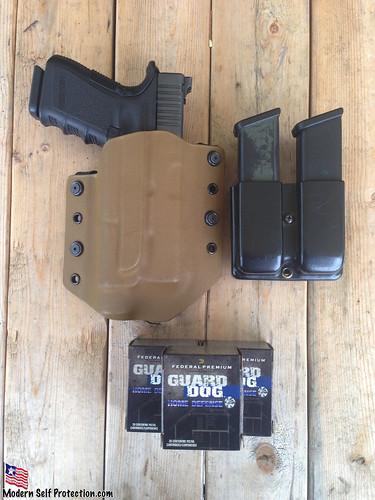
Now that ammo is finally coming back into the market I can replace my carry ammo. I use to replace my ammo every six months when I worked for an armored car company and almost weekly when I was a contractor overseas, now I try and replace it about once a year. My current choice is Federal Guard Dog ammo (here’s my Ammo Review on it). To my amazement it wasn’t that expensive.
When I get new carry ammo, or ammo that my life depends on here are the steps I think you should take to make sure the ammo will work. First, shoot some to make sure it functions in your carry gun (here’s the way I test ammo). That’s one of the reasons I don’t like to change carry ammo very often and have been carrying Guard Dog since around 2007.

Next, line up all the ammo on a solid surface for inspection. You are looking for any round that is taller or shorter then the others. And yes you can actually see when one is bad and it does happen. I had one once (from Federal) that was so far out of speck it didn’t fit into a magazine and when I put it next to the same ammo it was painfully obvious that something was wrong.
While you are looking at the ammo, look for anything that looks wrong; dents in the casing, tool marks, off colors, bullets in crooked, or anything else that doesn’t look right. If you find one that looks wrong, just get rid of it. I’ve gotten rid of up to 2 in a box of 20 (or 10% for all you math nerds) just because it looked funny. Normally it’s not a problem because you can never buy just the right amount for carry. My daily carry ammo totals 50 rounds and these come in boxes of 20. Don’t worry it never works out right.
Next take apart your gun and using only the barrel, test every round to make sure any are not oversized. An oversized round can lock up your gun after being fired or cause a malfunction because the gun won’t go into battery to fire. Some instructors will tell their students just to hit the back of the slide to make the gun go into battery, but that is how you get the oversized round into the gun to fire and then it doesn’t want to come out. Go with the old Tap-Rack-Bang; there is a reason every one teaches it.
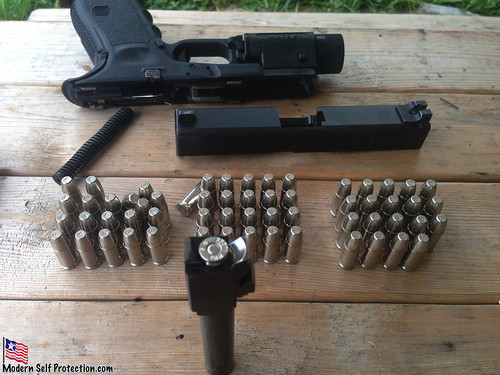
While you are seeing if each round fits also take a look at the primers. You want to make sure they all look the same and are all the way seated into the pocket. If the primer isn’t seated all the way the round may fail to fire.
Last, triple make-sure you have the right amount of ammo in your magazine. On the range or competition it’s just embarrassing to have a half empty mag, in real life it could get you or others killed. Here’s my suggestion:
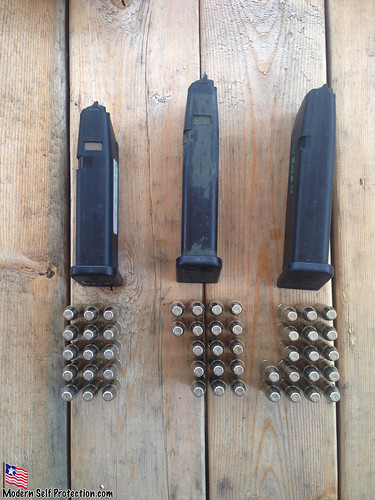
Lay out all the ammo next to each magazine and count it. You can see in the picture that I carry a 15-round mag in the gun and 2 17-round mags as reloads for my Glock 19. Notice the ammo all counted correctly with each mag. Then load one magazine at a time and count the rounds as you put them in the mag. The third check is the witness holes in the magazines to make sure they are completely filled.
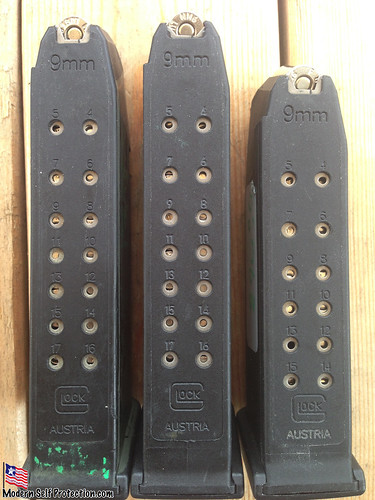
One last tip; keep the ammo boxes and write the date of purchase on the boxes. If you have left over ammo store it there too. This is just in case the worst ever happens and you need to use your gun in self defense. This will give the laboratory something to test for various forensic data. One of the most important ones is for stippling pattern. Stippling is the burnt powder making a mark around the bullet on the target. This will show how far away from the target the gun was when it was fired. I’ve studied cases where this data was literally the difference of a good guy going to prison and being acquitted. It won’t hurt to keep the boxes with your other ammo and it could save you in the end.
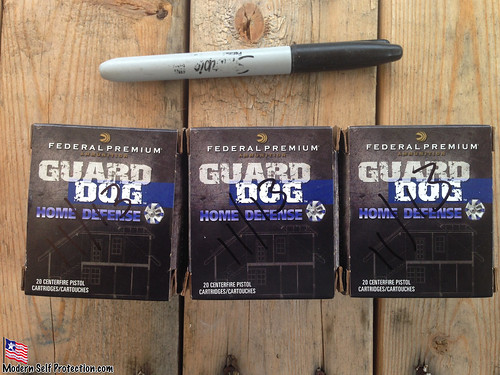
Stay Safe,
Ben
One Reply to “New Self Defense Ammo”